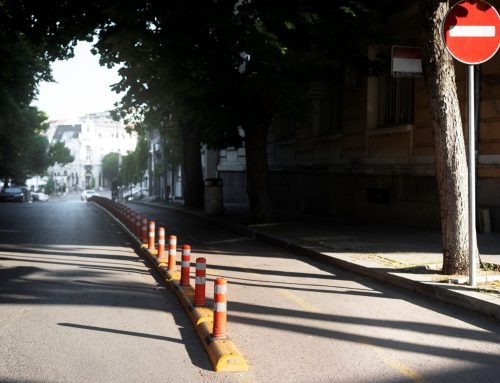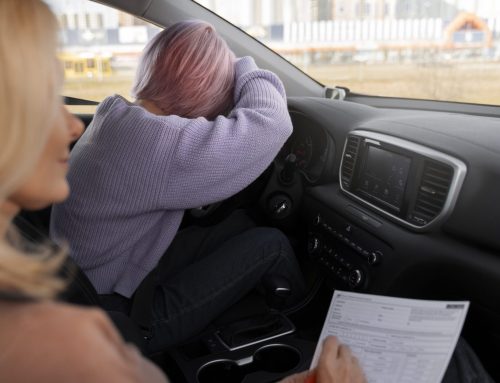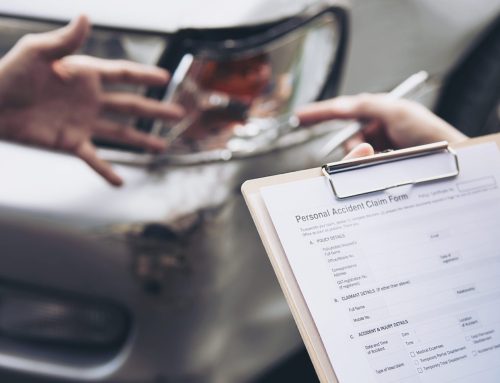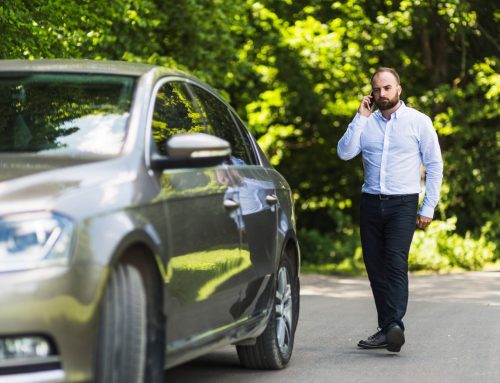When a collision happens, Ontario law imposes strict duties on every driver involved. Failing to honour those duties—commonly known as leaving the scene of an accident in Ontario—can lead to severe legal consequences that reach far beyond a routine traffic ticket. This in-depth guide explains exactly when a driver is considered to have “failed to remain,” how prosecutors frame the offence, and why retaining Traffic Paralegal Services can make all the difference
Every year, provincial statistics show that nearly 8 000 drivers are charged under section 200 of the Highway Traffic Act (HTA). Behind each number lies a moment of panic: a driver worried about insurance surcharges, an inexperienced motorist unsure of whom to notify, or an individual who simply misjudges the seriousness of a minor bumper tap. Understanding the rules before you find yourself in that stressful situation is the single best way to avoid accidentally committing a serious offence.
What Does It Mean to Leave the Scene of a Collision?
Understanding the core concept is the first step to building a strong defence. In Ontario, a driver’s legal responsibility begins at the very moment contact occurs, whether anyone appears injured or not. If you drive away prematurely, police may lay leaving accident scene charges in Ontario even when the damage seems minor or you plan to return later with insurance details.
Legal Definition in Ontario
Section 200 of the HTA and section 320.16 of the Criminal Code both require motorists to stop after any collision, provide identification, and offer assistance where practical. A driver who fails in those duties commits a “fail to remain” or Ontario traffic law hit and run offence.
Difference Between “Fail to Remain” and “Hit and Run”
Fail to Remain describes the provincial offence under the HTA, whereas Hit and Run is the colloquial term often used for the parallel charge of failing to stop after an accident causing bodily harm or death.
Is It Illegal to Leave the Scene of an Accident in Ontario?
Most motorists intuitively know they must stop after a crash, yet many still wonder is it illegal to leave the scene of an accident in Ontario. The answer is yes—unless a genuine medical emergency or immediate hazard prevents compliance. Even then, you still must report the collision as soon as reasonably possible.
Traffic and Criminal Code Implications
- Provincial level (HTA s. 200): No injury required; the act of failing to stop and exchange particulars is enough to establish liability.
- Criminal level (Criminal Code s. 320.16): Prosecution must prove harm (property damage, bodily injury, or death) and that the accused knew or ought to have known a collision occurred.
Penalties for Leaving the Scene of an Accident
Penalties escalate quickly, and drivers often ask, “How serious is leaving the scene of an accident in Ontario?” The table and explanations that follow show how the same conduct can trigger either a provincial ticket or a full criminal prosecution.
Fines and Demerit Points
The table below sets out the provincial (HTA) consequences at a glance:
| Consequence | First Offence | Subsequent Offence | Statutory Reference |
| Fine | $400–$2 000 | $1 000–$2 000 | HTA s. 200(1) |
| Demerit Points | 7 | 7 | O. Reg. 339/94 |
| Licence Suspension | Up to 2 years | Up to 2 years | HTA s. 200(4) |
| Imprisonment | Up to 6 months | Up to 6 months | HTA s. 200(2) |
Footnote 1: All penalties cited are current as of 26 April 2025. Always verify fine schedules in force on the date of the offence.
Beyond the courtroom order, hidden costs accumulate quickly—tow-truck fees, storage charges at impound lots, civil claims for property damage, and a sizable jump in annual insurance premiums.
Charges and Penalties
If police lay a Criminal Code “fail to stop” charge, potential outcomes escalate dramatically:
- Indictable maximum: 10 years’ imprisonment (if bodily harm) or life (if death).
- Mandatory restitution orders that can run into tens of thousands of dollars.
- Minimum driving prohibition: 1 year on conviction.
- A permanent criminal record that can restrict professional licensing, bonding, and international travel.
Impact on Driver’s Licence and Insurance
A conviction triggers an automatic entry on your driver’s abstract. Seven demerit points remain visible for two years from the offence date, but insurers typically surcharge premiums for six if there was a collision. Some carriers treat a Criminal Code conviction as grounds for a total policy cancellation. If no replacement insurer is willing to assume the risk, Facility Association coverage—often double or triple normal rates—may be the only option.
Common Scenarios and Misconceptions
Every incident has its own nuances, and misunderstandings frequently land well-intentioned drivers in legal hot water. This section debunks common myths and clarifies when penalties for hit and run in Ontario truly apply.
What if No One Was Hurt?
Even a bumper tap can result in serious consequences. Physical harm is not required for the HTA offence. A motorist who thinks “no damage, no foul” may still face a seven-point ticket after surveillance footage surfaces days later.
What if You Didn’t Notice the Collision?
Courts have held that drivers are responsible for awareness of their surroundings. If evidence shows contact was obvious (e.g., loud impact, visible damage), claiming ignorance rarely succeeds. Dash-cam video, paint transfer, or eyewitness testimony often defeats the “I didn’t realize” defence.
Multi-Vehicle Chain Reactions & Skittish Drivers
It is common for nervous motorists to pull forward to a nearby side street to assess damage, intending to return—only to find police waiting with a summons. The safest approach is to activate four-way flashers, remain at the point of impact where safe, and instruct passengers to summon assistance if traffic creates danger.
Myth-Busting List
- Private property is not a safe haven. In some cases the HTA applies in parking lots open to the public.
- Offering to pay later is insufficient. You must still provide licence and insurance details on the scene.
- Leaving for help without returning can still be an offence. Stay put unless injury or hazard forces relocation.
- Calling your insurer does not satisfy legal reporting duties. Police notification is separate and mandatory.
What To Do If You’ve Been Charged
A formal charge for fail-to-remain can feel overwhelming, but early, informed action often changes the outcome. Understanding your rights and obligations at each procedural step is critical.
Legal Representation
Because penalties for hit and run in Ontario may involve jail and years of insurance hardship, obtaining representation is imperative. Traffic Paralegal Services has decades of courtroom experience defending fail-to-remain allegations throughout the province.
Building a Defence Strategy
A tailored strategy may include:
- Challenging identity: Was the investigating officer able to place you behind the wheel?
- Questioning knowledge: Did you genuinely believe no collision occurred?
- Verifying signage and road conditions: Poor lighting, confusing lane-markings, or uncorrected potholes may explain why the incident went unnoticed.
- Negotiating charge reduction: In suitable cases, prosecutors may accept a plea to “fail to report” rather than fail-to-remain.
Immediate Action Plan
- Request disclosure of all police notes, video, and witness statements.
- Document vehicle damage before repairs erase forensic clues.
- Gather GPS or other data from onboard devices to prove your version or events.
- Retain a reconstruction expert if skid-marks, debris fields, or air-bag downloads are at issue.
Proper defence begins with a thorough disclosure review, scene investigation, and—where helpful—expert opinion on vehicle dynamics.
How to Prevent Hit and Run Charges
The best way to avoid leaving the accident scene is to know your obligations before a crash ever happens. Following the checklist below keeps you on the right side of the law and protects potential insurance claims.
What to Do Immediately After an Accident
Checklist
- Stop safely away from traffic.
- Activate hazard lights to alert oncoming drivers.
- Call 9-1-1 if injuries or damage exceed $ 5,000 or if any driver appears impaired or injured.
- Exchange information: licence, insurance, ownership, and contact details.
- Collect independent witness details—names, phone numbers, licence plates.
- Photograph the scene, damages, vehicles, debris, and weather conditions.
- Report to police as soon as reasonably possible if officers do not attend the scene.
Importance of Reporting
Timely self-reporting not only fulfils the HTA requirement but also bolsters your credibility if litigation follows. A police report provides a neutral timestamp, confirms your cooperation, and prevents the other party from alleging you fled.
Technology as a Safeguard
Many dash-cam models now automatically mark collision footage for easy retrieval. Installing such a device can prove invaluable in countering allegations of reckless driving, disputed impact points, or false claims of flight from the scene.і
Need guidance you can rely on? Contact Traffic Paralegal Services today for a confidential review of your case and a comprehensive defence plan.







Leave A Comment
You must be logged in to post a comment.